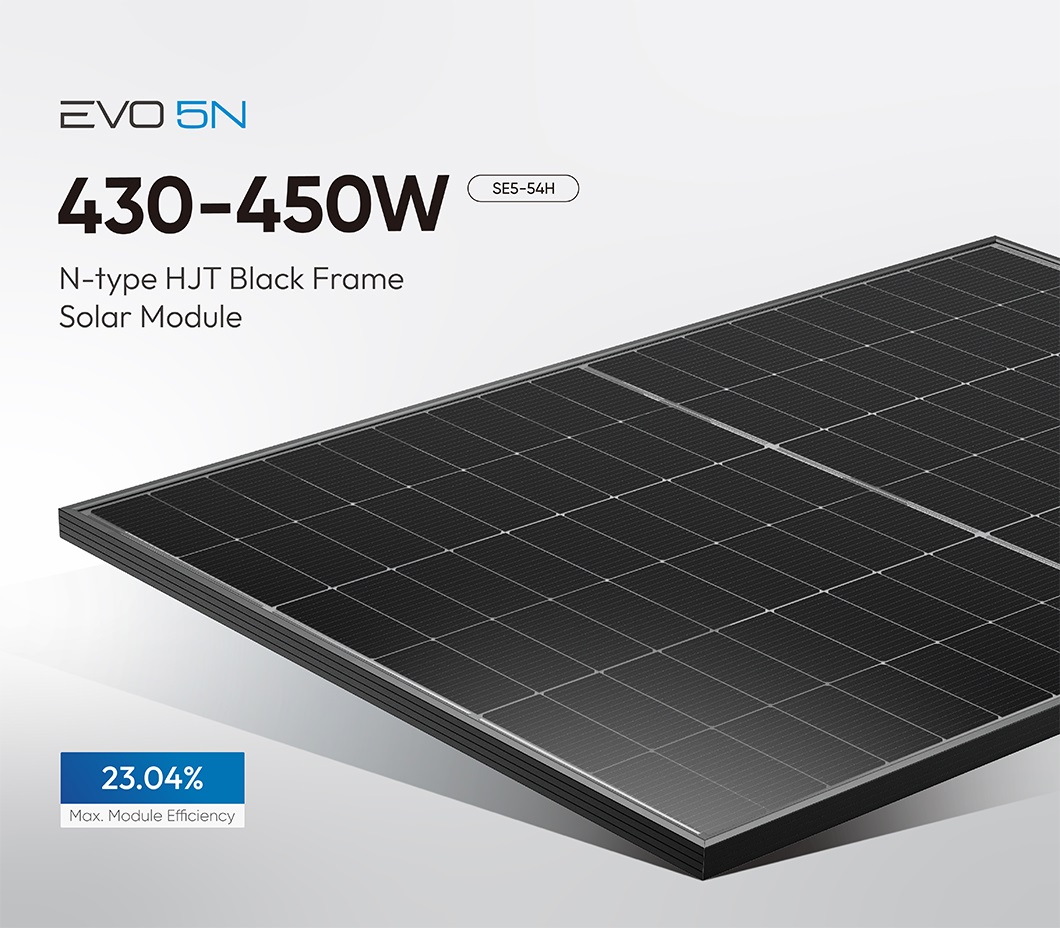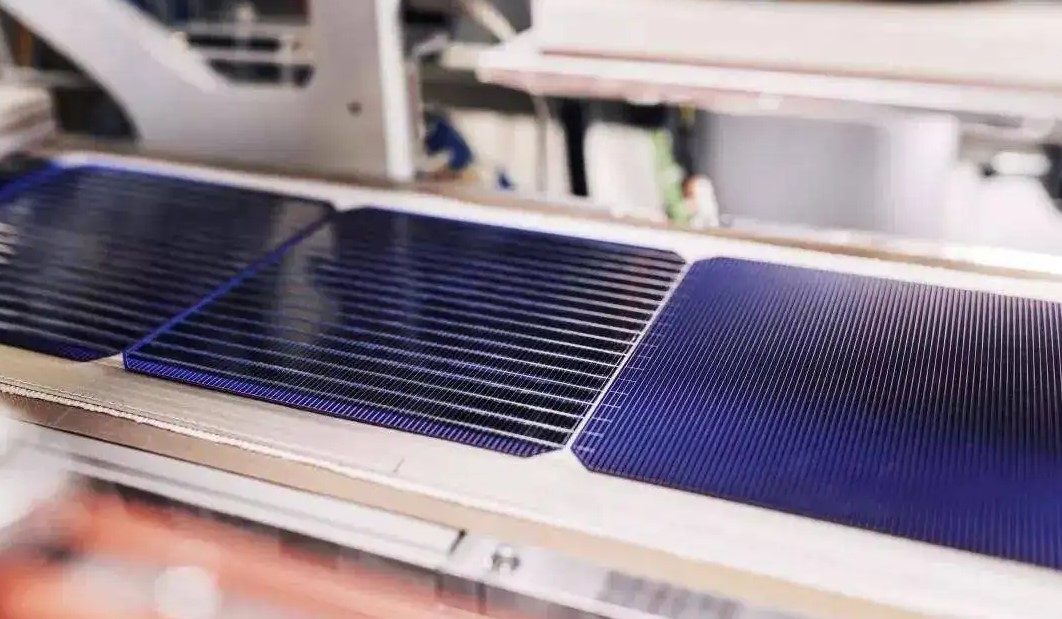EVO 5N Series HJT Black Frame modules combine the gettering process and single-side μc-Si technology to ensure higher cell efficiency and higher module power. More stable power generation performance and is even better in hot climates. Stronger water resistance, and greater air impermeability to extend module lifespan.
Brand:
SunEvoPower Range:
430W~450WMax. Efficiency:
23.04%Number of Cells:
108 (6×18)Dimensions of Module L*W*H:
1722 × 1134 × 30mmWeight:
21.0kgFront Side Glass:
3.2mm coated tempered glassBacksheet:
WhiteFrame:
Anodized aluminium alloyJunction Box:
Ip68 rated (3 by pass diodes)Cable:
4mm2 , 300mm (+) / 300mm (-), Length can be customizedWind/Snow Load:
5400PaConnector:
Mc4 compatibleEVO5N 450W N-type HJT 108 Cells Black Frame Solar Module 450W 445W 440W 435W 430W
EVO 5N Series HJT Black Frame modules combine the gettering process and single-side μc-Si technology to ensure higher cell efficiency and higher module power. More stable power generation performance and is even better in hot climates. Stronger water resistance, and greater air impermeability to extend module lifespan. The black frame looks nice on the roof.

Electrical Parameters (STC*)
|
Maximum Power (Pmax/W) |
430 |
435 |
440 |
445 |
450 |
|
Maximum Power Voltage (Vmp/V) |
34.60 |
34.86 |
35.12 |
35.38 |
35.63 |
|
Maximum Power Current (Imp/A) |
12.43 |
12.48 |
12.53 |
12.58 |
12.63 |
|
Open Circuit Voltage (Voc/V) |
41.37 |
41.64 |
41.91 |
42.18 |
42.44 |
|
Short Circuit Current (Isc/A) |
12.95 |
13.00 |
13.05 |
13.10 |
13.15 |
|
Module Efficiency (%) |
22.02 |
22.28 |
22.53 |
22.79 |
23.04 |
|
Power Output Tolerance (W) |
0/+5W |
||||
|
Temperature Coefficient of Isc |
+0.04%/°C |
||||
|
Temperature Coefficient of Voc |
-0.24%/°C |
||||
|
Temperature Coefficient of Pmax |
-0.26%/°C |
||||
HJT solar cell is the third generation technology, also known as heterojunction battery. It is a special PN junction, which is formed of amorphous silicon and crystalline silicon materials. It is an amorphous silicon film deposited on crystalline silicon, which is a kind of N-type battery; heterojunction battery is a high-efficiency crystalline silicon solar cell Structure, a hybrid solar cell made of crystalline silicon substrate and amorphous silicon film, that is, a layer of non-doped hydrogenated amorphous silicon is added between P-type hydrogenated amorphous silicon and N-type hydrogenated amorphous silicon and N-type silicon substrate. crystalline silicon film.
HJT battery mainly has the following advantages:
1. Better conversion efficiency: HJT efficiency potential exceeds 28%, much higher than that of PERC cells. Limited by the materials of P-type monocrystalline cells, the conversion efficiency of PERC cells is close to the ceiling, while the highest conversion efficiency of HJT has exceeded 26%, and it is expected to exceed 28% in the long run. The efficiency advantage is obvious.

2. The process flow is more simplified and there is more room for cost reduction: HJT is a low-temperature process, which is better in silicon wafer cost (facilitating thinning and reducing thermal damage) and non-silicon cost (fuel energy saving). At the same time, HJT only needs 4 processes, which is cheaper than PERC (8 processes) and TOPCon (9-12 processes).

3. Lower light-induced attenuation: The attenuation rate of HJT batteries is less than 3% in 10 years, and the power generation decline in 25 years is only 8%, which is much lower than that of PERC and TOPCon batteries.

4. Low-temperature coefficient and high stability: In an environment of 82 degrees Celsius, the photoelectric conversion efficiency of HJT is 13% higher than that of traditional components.

5. Higher double-sided rate: HJT is a double-sided symmetrical structure, and the double-sided rate is expected to increase to 93-98% (PERC and TOPCon are both around 80%, but it is difficult to increase it), and can obtain more than 10% of the annual power generation volume gain.
